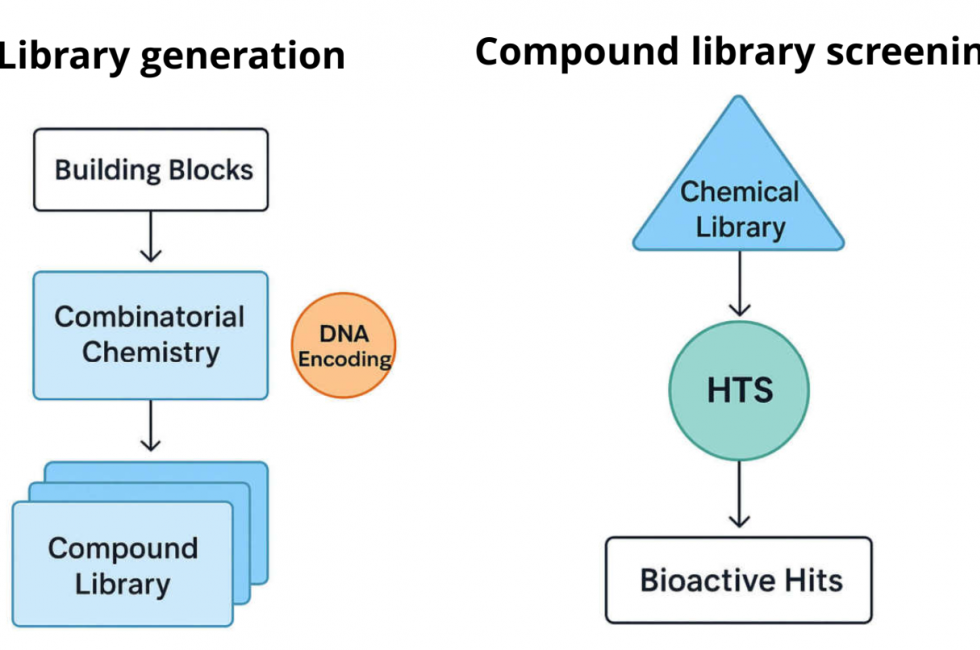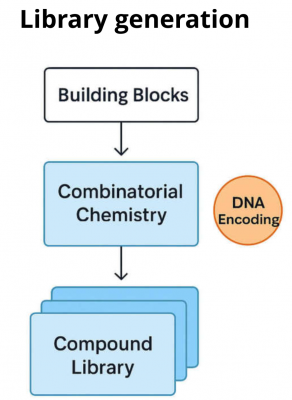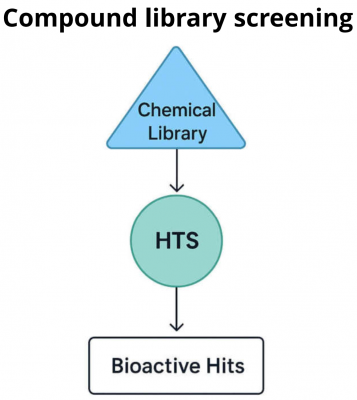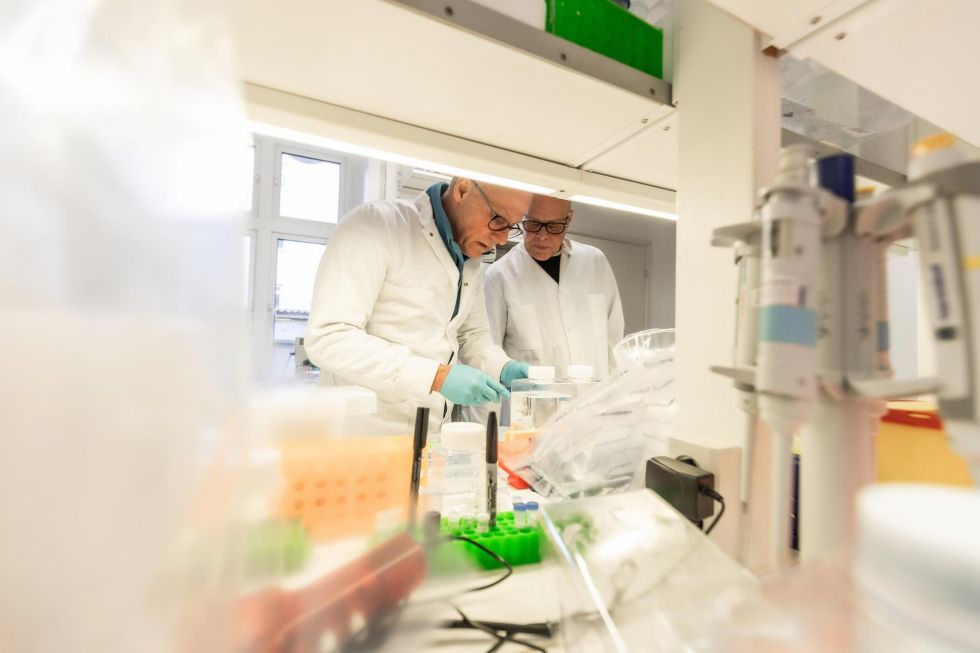
Chemical Libraries: Types, Design Strategies and Applications in Drug Discovery
Introduction to Chemical Libraries
Chemical libraries have become indispensable tools in modern research, particularly in the fields of chemical biology, pharmaceutical development, and materials science. At their core, a chemical library is a systematically organized collection of stored chemical compounds, most often small molecules, each annotated with essential information such as chemical structure, purity, quantity, and physicochemical characteristics. These libraries are designed to be screened rapidly against biological targets, typically through high-throughput screening (HTS), to identify bioactive molecules that can serve as starting points for drug discovery or as chemical probes for basic research.
The fundamental purpose of a chemical library is to maximize the exploration of chemical space. By sampling a diverse and extensive set of molecular entities, researchers significantly increase the probability of finding a “hit” compound—one that shows measurable activity against a given target or in a particular biological system. Greater diversity generally translates into higher hit rates, as the range of potential binding interactions with proteins, nucleic acids, or cellular pathways is expanded.
High-throughput screening is closely tied to the use of chemical libraries. HTS technologies allow tens of thousands, or even millions, of compounds to be tested rapidly against a defined target. This process accelerates lead identification, the critical first stage of transforming an initial hit into a lead compound with optimized activity and drug-like properties. Together, chemical libraries and HTS have become cornerstones of early-stage drug discovery, significantly reducing the time and resources required to progress from target identification to the generation of viable lead candidates.
Types of Chemical Libraries

Diverse (Combinatorial) Chemical Libraries
Combinatorial chemical libraries are among the most widely recognized formats. They are created through combinatorial chemistry, a technique that systematically combines sets of chemical building blocks in all possible combinations. This approach generates vast collections of structurally diverse compounds that can cover large regions of chemical space.
Such libraries often include drug-like, lead-like, peptide-mimetic, or natural-product-like molecules, depending on the building blocks selected. Their strength lies in sheer scale and diversity, which makes them particularly useful for broad exploratory compound library screening campaigns in pharmaceutical pipelines.
DNA-Encoded Chemical Libraries (DELs)
DNA-encoded chemical libraries (DELs) represent a transformative technology in chemical library development. In a DEL, each small molecule is covalently linked to a unique DNA barcode that encodes its synthetic history and identity. This strategy enables the construction of libraries containing millions to billions of distinct compounds.
Screening DELs involves affinity selection, where the library is incubated with a biological target, followed by next-generation sequencing to identify bound molecules via their DNA tags. This approach allows ultra-high-throughput screening at a fraction of the cost of conventional HTS, since billions of compounds can be synthesized and interrogated in parallel with modest experimental infrastructure.
DELs have already yielded potent ligands for otherwise challenging targets, and several DEL-derived candidates have advanced into clinical trials. Their scalability and efficiency are redefining the scope of compound library screening.
Targeted and Focused Chemical Libraries
In contrast to broadly diverse collections, targeted or focused chemical libraries are intentionally designed around specific protein families, receptor types, or therapeutic areas. Common targets include kinases, G protein-coupled receptors (GPCRs), proteases, and ion channels.
The creation of focused libraries often involves computational tools such as molecular docking (molecular) and virtual screening to pre-select scaffolds and functional groups most likely to interact with the chosen targets. Because the chemical space is intentionally constrained, these libraries frequently yield higher hit rates and produce cleaner structure–activity relationship (SAR) data, which simplifies subsequent optimization.
Fragment Libraries and Fragment-Based Drug Discovery (FBDD)
Fragment-based drug discovery relies on fragment libraries composed of very small molecules, typically with molecular weights below 300 Da. Although a fragment library may contain fewer than 5,000 compounds, these small molecules efficiently probe large regions of chemical space because of their low complexity.
Fragments generally bind weakly to targets, but their small size makes them excellent starting points for medicinal chemistry optimization. Reported hit rates for fragment screening are higher than those of conventional HTS, often ranging from 3–10%. Importantly, fragment-derived leads tend to have more favorable drug-like properties, including improved solubility, better ligand efficiency, and higher success rates during optimization.
Natural Product Libraries
Natural product libraries are derived from extracts of plants, fungi, marine organisms, or microorganisms. These libraries are particularly valued for their exceptionally high structural diversity and complexity, which arise from evolutionary pressure to interact with biological targets.
Compared with many synthetic libraries, natural products often occupy more drug-like chemical space and frequently demonstrate superior absorption, distribution, metabolism, excretion (ADME), and toxicity profiles. As a result, they often produce higher hit rates in compound libraries for drug discovery. However, working with natural product libraries presents challenges, including the need for additional purification and characterization of complex mixtures.
Design and Generation of Chemical Libraries
Methods for Generating Chemical Libraries
Several methods exist for the generation of chemical libraries, each offering distinct advantages:
- Combinatorial chemistry enables systematic exploration of large chemical spaces by assembling diverse building blocks.
- DNA-encoded synthesis integrates combinatorial chemistry with DNA barcoding to expand libraries to unprecedented scales.
- Natural product isolation brings evolutionary structural diversity into compound libraries, often yielding complex scaffolds inaccessible by synthetic methods.
Design Strategies and Optimization
The effectiveness of a compound library depends heavily on its design. Key design principles include:
- Chemical diversity: Incorporating a wide range of functional groups, ring systems, stereochemistry, and molecular sizes to maximize exploration of chemical space.
- Scaffold diversity: Ensuring a varied set of molecular frameworks to increase the likelihood of discovering novel binding modes.
Targeted physicochemical properties: For drug discovery, properties such as solubility, membrane permeability, and metabolic stability are prioritized to improve the likelihood of clinical success.
Computational Tools in Chemical Library Development
Computational chemistry plays a central role in the design and prioritization of compounds before synthesis.
- Virtual screening predicts the binding affinity of compounds in silico, allowing efficient triaging of candidates.
- Molecular docking provides insights into binding poses and molecular interactions with targets.
- Quantitative structure–activity relationship (QSAR) models identify structural features correlated with biological activity, guiding library optimization.
Storage, Management, and Data Integrity
Best Practices for Storage and Handling
The long-term value of a chemical library depends on proper storage and handling. Key practices include:
- Temperature and environmental control: Maintaining stable, low-temperature conditions to prevent degradation.
- Labelling and coding: Robust barcoding and cataloguing systems to ensure accurate identification and retrieval.
- Routine quality control: Regular assessment of compound purity and activity to maintain screening reliability.
Digital Management Systems
Digital platforms are critical for organizing and tracking chemical libraries. Databases capture chemical structures, physicochemical data, and screening results, ensuring accessibility and reproducibility. Integration with cloud-based systems allows annotation, collaboration, and secure sharing of information across research sites.
Automation and Robotics
Automation and robotics technologies, including robotic storage and dispensing systems, are increasingly employed to manage the vast scale of modern compound libraries. Robotics improve efficiency, minimize human error, and enable rapid preparation of samples for HTS campaigns.
Applications and Case Studies

High-Throughput and Phenotypic Screening
High-throughput screening remains the primary application of chemical libraries. Libraries are tested against defined molecular targets such as enzymes or receptors, or against whole-cell systems to assess phenotypic changes. Both approaches contribute to hit identification and subsequent lead optimization.
Phenotypic screening, in particular, has regained interest because it can reveal compounds that act through unexpected mechanisms, thereby uncovering new biology and therapeutic opportunities.
Fragment-Based Screening vs Conventional HTS
Fragment-based drug discovery contrasts with conventional HTS in both scale and methodology. Whereas HTS evaluates hundreds of thousands of compounds in large, diverse libraries, fragment screening interrogates smaller sets of very small molecules. Despite lower throughput, fragment screening often identifies higher-quality starting points, leading to drug candidates with improved physicochemical and pharmacokinetic properties.
Case Studies
- Cancer drug discovery: Chemical libraries have facilitated the development of kinase inhibitors, which transformed the treatment of cancers such as chronic myeloid leukemia and lung cancer.
- Antibiotic discovery: Natural product libraries have yielded new antibacterial scaffolds, crucial in combating rising antibiotic resistance.
- DNA-encoded libraries in oncology: DELs have uncovered ligands for difficult cancer targets, including protein–protein interactions previously considered undruggable.
Emerging Trends and Future Directions
Machine Learning and Artificial Intelligence
Machine learning is increasingly integrated into chemical library development. Algorithms trained on large datasets can predict activity, optimize diversity, and prioritize compounds for synthesis and screening. This enhances efficiency, particularly for targeted or focused libraries.
Integration with Biological Data
The convergence of chemical and biological data sets is expanding opportunities for chemical library screening. Integration with genomics, transcriptomics, and proteomics enables the identification of ligands for previously intractable targets, including rare or context-specific proteins.
Microfluidics and Advanced Automation
Emerging technologies such as microfluidic screening platforms are enabling ultra-high-throughput interrogation of libraries at reduced cost and sample volume. Automated storage and retrieval systems further streamline the handling of increasingly large compound collections.
Conclusion
Chemical libraries are a cornerstone of modern chemical and pharmaceutical research. From combinatorial chemical libraries and natural product collections to fragment libraries and DNA-encoded libraries, each approach contributes unique strengths to the collective effort of exploring chemical space. Advances in computational chemistry, automation, and machine learning continue to enhance the efficiency and effectiveness of chemical library development.
Through high-throughput screening and innovative screening technologies, chemical libraries enable the rapid identification of hits and leads, accelerating the path from target discovery to therapeutic development. As the field evolves, the integration of chemical libraries with biological and computational data promises to unlock new frontiers in drug discovery and beyond.
For researchers interested in learning more about our chemical libraries, DNA-encoded libraries (DELs), high-throughput screening technologies, or opportunities for collaboration, we encourage you to contact Vipergen. Our team is available to provide detailed information, discuss customized solutions, and explore potential research partnerships.
Related Services
| Service | |
|---|---|
Small molecule drug discovery for even hard-to-drug targets – identify inhibitors, binders and modulators | |
Molecular Glue Direct | |
PPI Inhibitor Direct | |
Integral membrane proteins | |
Specificity Direct – multiplexed screening of target and anti-targets | |
Express – optimized for fast turn – around-time | |
Snap – easy, fast, and affordable |

